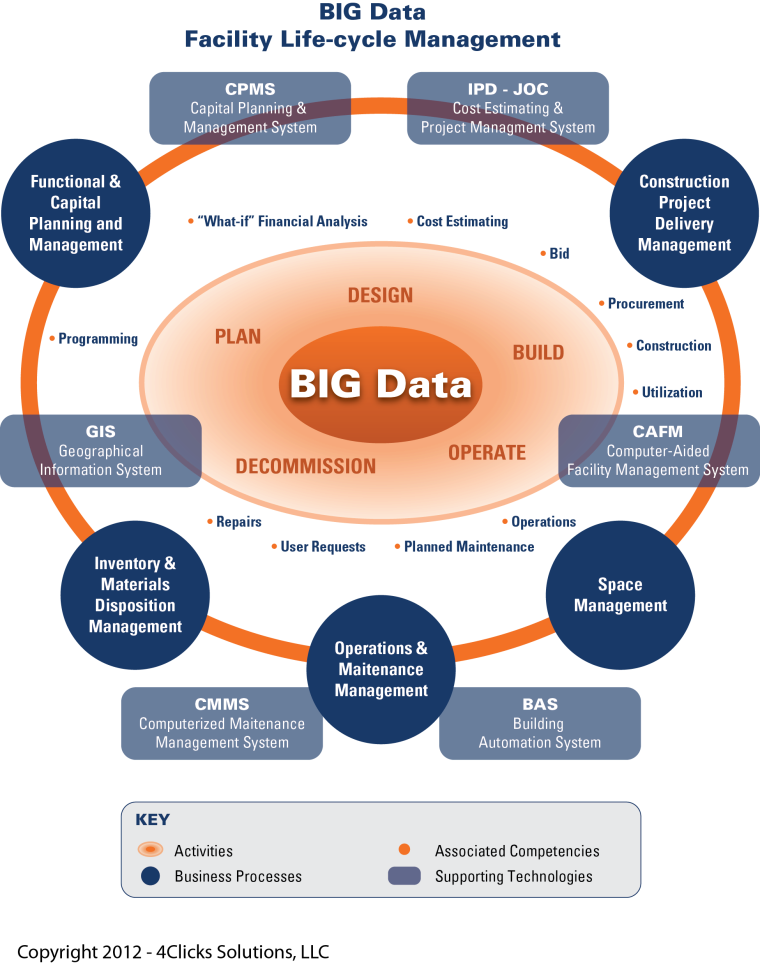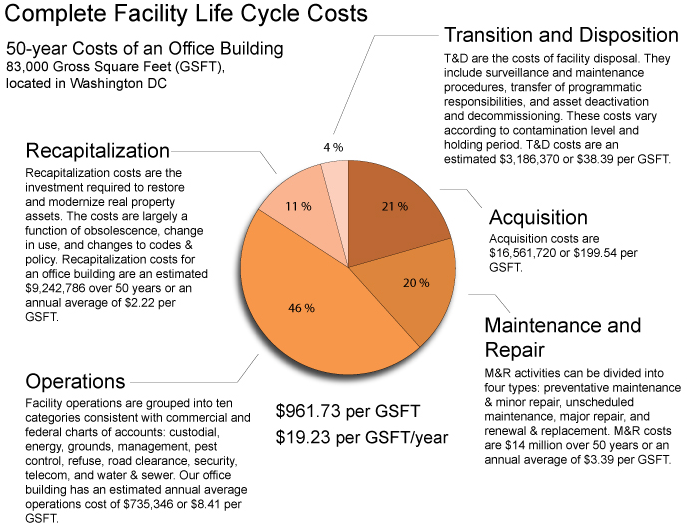A multi-dimensional tool, Building Information Modelling (BIM) involves generating a visual model of the building which also manages data about it, at the design stage, throughout the construction phase and during its working life. Typically BIM uses real-time, dynamic building modelling software working in 3D, 4D (workflow) and, increasingly, 5D (quantity surveying) to increase productivity and efficiency, save costs in the design and construction stages, and to reduce running costs, after construction.
Building Information Modelling (BIM) covers geometry, spatial relationships, light analysis, geographic information, quantities and properties of building components, project management and post-construction facilities management. BIM data can be used to illustrate the entire building life-cycle, from cradle to cradle, from inception and design to demolition and materials reuse; quantities and properties of materials, which can be easily extracted from the model; and the scope of works, including management of project targets and facilities management throughout the building’s life. Furthermore, systems, components, assemblies and sequences can be shown in relative scale to each other and, in turn, relative to the entire project.
The Government’s Industrial Strategy, published in early 2013, states that £40 billion of public money is spent on Centrally Funded Public buildings, every year. From this, millions of pounds are lost through poor integration and not learning from past mistakes. The strategy suggests that:
- 30% of the construction process is rework
- 60% of the labour effort is wasted
- 10% loss is due to wasted materials
- 3-5% of the construction turnover is wasted due to loss of interoperability.
It follows that construction information is, therefore, often:
- Inaccurate
- Incomplete
- Ambiguous.
By 2025, Government is aiming to maximise efficiency in the construction industry through legislation and best practices aimed at:
- Lowering costs
- Speeding delivery
- Lowering emissions
- Increasing exports.
Early BIM demonstration projects have already achieved savings of around 20% during the construction phase, with some on course to make 33% savings over the life of the building; future projects are targeting even greater savings.
However, BIM goes beyond simply switching to new software. It requires changes to the definition of traditional architectural phases, more data sharing than architects and engineers are used to, and a willingness to embrace partnering in an approach that collects all project related information digitally. BIM is able to achieve this by modelling representations, specifications, and the critical paths of actual parts and components used in the construction process, representing a major shift from traditional computer aided design.
The interoperability of the model requires that drawings, master building specifications, standards, regulations, manufacturer product specifications, cost and procurement details, environmental conditions (emissions data), critical paths, clash detection and submittal processes all work together. The whole process is about disparate information resources feeding into a central store of digital documentation, which then becomes the heart of the building information model.
BIM is far more than 3D CAD modelling; it is a rich information source containing geometric, visual, dimensional, and process information. If the software is the interface to a building information model; rich information content is its body and soul. Managed BIM will reduce the information loss associated with handing a project from design team, to construction team and to building owner/operator, by allowing each group to add to, and reference back to, all information they use/create during their period of contribution to the BIM model. To put it simply, without the embedded information, BIM is little more than 3D pictures.
Building Information Modelling can, of course, still produce drawings, but the process is no longer focussed on lines, shapes and text boxes; it is now based on data sets that describe objects virtually, mimicking the way they will be handled physically in the real world. The real difference that BIM offers, however, is that it is a truly interoperable system, offering full integration, allowing the inputs of the various professionals and specialists involved in every stage of the life-cycle to work together, without data or process conflict.
Video: NBS Lakeside Restaurant
Discover the benefits of incorporating information rich Building Information Modelling (BIM) through the case study project ‘NBS Lakeside Restaurant’
Depending upon the perspective of approach to BIM, it can relate to lots of different things:
- • To an engineer – energy consumption
- To a contractor – buildability
- To a client – useable space
- To a manufacturer – product maintenance, servicing, product performance.
On a technical level Industry Foundation Classes (IFC or ifcXML) is an open specification for Building Information Modelling; they are effectively an object-based file format tied to a specific data model. IFC was originally developed by buildingSMART to facilitate interoperability in the architecture, engineering and construction industries, and forms a commonly used collaboration format in BIM projects.
Green Building XML (gbXML) is a schema specifically focused on green building design and operation and is used as the input in several energy simulation applications; gbXML powers a number of building energy simulation tools available to the market.
The IFC model specification is an open and available online (see Further information). The IFC format is registered by the International Standards Organisation (ISO 16739:2013).
Workflow/4D
4D scheduling in BIM allows the designer/manager to see problems scheduled in the works durations and analyse congestion and accessibility more effectively than through standard Gantt charts. A more powerful aspect of 4D schedules are that, unlike a static building model, they are in a dynamic state. By linking time to structural components, it is possible to carry out time related structural analysis using the actual BIM model.
If workflow analysis of the model is carried out at design stage, it may determine the preferred material and the construction methodology in order to save time and money.
Clash detection
Clash detection is one of BIM’s buzz phrases, primarily because it puts a value on the savings made from eliminating problems found during a review. Clash detection can be broken into three categories or types:
- Hard clash
- Soft clash/clearance clash
- 4D/workflow Clash.
A hard clash is simply when two objects occupy the same space. For example, a pipe going through a wall where there is no opening.
Soft clashes refer to allowable tolerances or space; for example, buffer zones between components left to provide space for future maintenance.
4D/Workflow clashes refer to clashes in scheduling work crews, equipment/material fabrication delivery clashes and other timeline issues.
Quantity Surveying/5D
The level of BIM utilised is often down to the maturity level of the team and that of its respective parts, so utilising fully integrated 4D and 5D is still uncommon, mainly down to software costs and educational/training limitations. However, the certainty of quantities generated from the BIM model allows several different assessments in finding the most effective solutions prior to construction – BIM modelling means that a schedule of quantities can be produced instantly; whereas previously a QS could spend considerable time measuring and taking quantities from 2D drawings. However, despite BIM’s accuracy, there remains the issue of differences in ‘standard methods of measurement’. The UK uses several SMMs, Ireland mainly uses a version of ARM (Agreed Rules of Measurement), and the US and Australia use other variants. So, a common international standard method of measurement, compatible with all BIM software, seems to still be a way off.
Managing a construction project and building lifecycle using a building information model can result in substantial savings, in both time and money, from design and construction through to on-going maintenance.
The model saves time and waste on site, and renders extra coordination checks largely unnecessary; the information generated from the model leads to fewer errors on site, caused by inaccurate and uncoordinated information. When all members of the construction team work on the same model, from early design through to completion, introduced changes are automatically coordinated through the BIM, across the whole project, and information generated is therefore of high quality.
BIM has already given the industry measurable positives:
- Increased understanding and predictability – offering greater certainty and reduced risk
- Improved efficiency
- Improved integration and coordination – meaning less problems onsite
- Less waste
- Better value and quality
- Better buildings throughout their life-cycle.
Information technology is an integral part of today’s commerce, and transferring design/construction information from designers to producers/constructors is an example where, with the availability of modelling software, the tools are already in place. However, when choosing which simulation tool to use for a project, the teams involved must consider the application’s accuracy, reliability, user base and possible needs for training, considered against the project information they will have at their disposal.
Construction is the world’s most wasteful industry; it is the largest consumer of global resources, raw materials and global energy supplies; it creates the largest amount of global solid waste; and it is responsible for around 50% of greenhouse gas emissions. However, it is worth trillions of dollars per annum globally.
BIM technology presents a great opportunity for manufacturers, but they must ensure that they keep up and are part of the industry changes, not a future ‘Kodak’.
The proliferation of interpretations of BIM currently hampers the adoption of a working strategy to improve the built environment, and in turn the quality and sustainability of deliveries from design and construction teams to clients. In the UK, the Construction Project Information Committee (CPIC), responsible for providing best practice guidance on construction production information, proposed a definition of Building Information Modelling for adoption throughout the UK construction industry. This was jointly forwarded by the RIBA, CPIC and buildingSmart as a definition of BIM for the UK construction industry, to act as a starting point for discussion and refinement. It is:
‘Building Information Modelling is digital representation of physical and functional characteristics of a facility creating a shared knowledge resource for information about it forming a reliable basis for decisions during its life-cycle, from earliest conception to demolition.’
It should be borne in mind that adoption of BIM in the UK is not a mandatory undertaking, yet. However, the Government aims for all publically funded works begun after 2015 to be carried out through a building information model; it is anticipated that where the government goes, regulation and the rest of the construction industry will follow. And, because the public purse funds so much of the building work in the UK, within a very short time, what is currently voluntary is very likely to be mandatory.
As leading providers of information to the UK construction industry, NBS offers a range of software tools and information resources that support the design team across the project timeline, enabling the production of co-ordinated digital information. NBS are investing heavily in turning specification and product information into digital objects in anticipation of the industry-wide adoption of BIM. As part of this NBS aims to regularly publish guidance and information on BIM resources for the construction industry.
The NBS National BIM Library, NBS Plug-ins and NBS Create will aid information flow throughout the BIM process, enabling more efficient and accurate working when generating design documentation. Even from the project concept stage, objects can be selected from the NBS National BIM Library and added directly to design models; and, due to the direct linkage between design and specification through NBS Plug-ins, access to expert guidance is maintained within NBS Create. By using the plug-in, an outline specification can be automatically produced from the design model. Both specification and model are synchronised, making it possible to manage links to the specification throughout the project.
As the design evolves, proprietary objects can be substituted from NBS National BIM Library, while developing the specification detail within NBS Create, providing real-time information on cost and performance.
A digital model is built using lots of small digital components, called BIM objects. These objects are the building blocks of all digital models. However, in the case of BIM, the objects are not about imitating catalogue products; they are digital replications of products and are assembled in the information model.
There is currently a huge demand from designers for manufacturers’ BIM objects, but creating and maintaining them requires expertise that architects and designers don’t have time to commit. Furthermore, there’s no efficiency for UK construction if every designer creates their own BIM objects for each manufacturer. This is where the NBS National BIM Library comes in.
NBS National BIM Library is a publishing tool, which uses the latest web technology to place manufacturer’s products in the cloud, connecting them to other objects, and getting them used by the construction industry. The NBS National BIM Survey 2013 says that:
- Over 110,000 BIM objects have been downloaded so far this year
- NBS National BIM Library hosts an active user community, who are passionate about BIM
- NBS National BIM Library covers all formats
- NBS National BIM Library uses cloud technology so that objects can be used anywhere
- NBS National BIM Library offers manufacturers detailed usage analysis to help win business.
NBS National BIM Library maintains a focus on high quality digitised objects, available on all platforms. As BIM unfolds and becomes the de-facto source of design information for the industry, quality and ubiquity of data objects will separate success from also ran. Simply put, if your object is not available as a digital object, then your product is unlikely to be bought.
Best of all, for users of the NBS National BIM Library resource, it’s free…
Laser surveying and cloud points can replace the need for traditional 2D surveys, delivering accurate models of existing buildings and infrastructure as 3D models. This can also be achieved faster, with a greater accuracy than traditional methods reducing overall project costs.
3D laser scanning has been around in the offshore sector for many years, creating accurate ‘As-Built’ models of oil rigs and plant facilities. However it is only in the last couple of years that the technology has been cost effective to use in the built environment sector.
While there have been attempts at creating a BIM for older, pre-existing facilities; trying to model a standing building or structure requires numerous assumptions about building design standards and codes, construction methods and materials available at the time of construction. These factors should be borne in mind before undertaking a 3D survey of an existing structure.
The future of architecture and the construction industry is digital; of this there can be no doubt, and BIM is the future of design and long term facility management; it is government led and technology driven; and it is implementing change across all industries, but there is still much confusion about what exactly it is and how it should be utilised and implemented. BIM is a digital model which helps everyone understand the building; however, it is a new technology in an industry typically slow to adopt change. Rest assured though, BIM will grow to play a crucial future role in building design and documentation.
BIM provides the potential for a virtual information model to be handed from Design Team (architects, surveyors, consulting engineers, and others) to Contractor and Subcontractors and then to the Owner, each adding their own additional discipline-specific knowledge and tracking of changes to the single model. The result greatly reduces information losses in transfer; makes buildings work, and helps build better value constructions. By signalling conflict detection BIM prevents errors creeping in at the various stages of development/construction, because the model actually informs the team about parts of the design which are in conflict or clashing. Finally BIM offers detailed computer visualization of each part and assembly in relation to the total building.
As hardware, software and cloud applications herald greater capability to handle increasing amounts of raw data and information, use of BIM will become even more pronounced than it is in current projects.
This article was produced with the technical assistance of Ian Chapman and Stefan Mordue, both of NBS.
Michael Smith is a member of the Construction Information Service editorial team. He is a mechanical engineering and building services specialist, chartered information specialist (MCLIP) and chartered environmentalist (CEnv).
NBS BIM information pages
NBS Published guidance and information on BIM resources for the construction industry
NBS National BIM Library
NBS National BIM Library contains over 5000 proprietary and pre-configured generic objects covering all major building fabric systems for walls, ceilings, roofs and floors; with new content added every few weeks, and all available free
NBS National BIM reports
Includes links to the National BIM Survey reports, IFC/COBie report and BIM for the terrified, all available for free
BIM – Changing our industry
WSP Group’s online hub exploring BIM in the construction industry
Construction Project Information (CPIC)
Promoting collaborative working within the construction industry.
Industry Foundation Classes (IFC/ifcXML)
Official source of all information about the technical specifications issued by buildingSMART International and of the supporting interoperability implementation programmes.
IFC Model specification pages
Contains an overview about IFC releases, including current IFC release, background information about previous releases, and preview of future releases
Green Building XML (gbXML)
gbXML open schema helps facilitate the transfer of building properties stored in 3D building information models to engineering analysis tools
November 2013
BackToTop
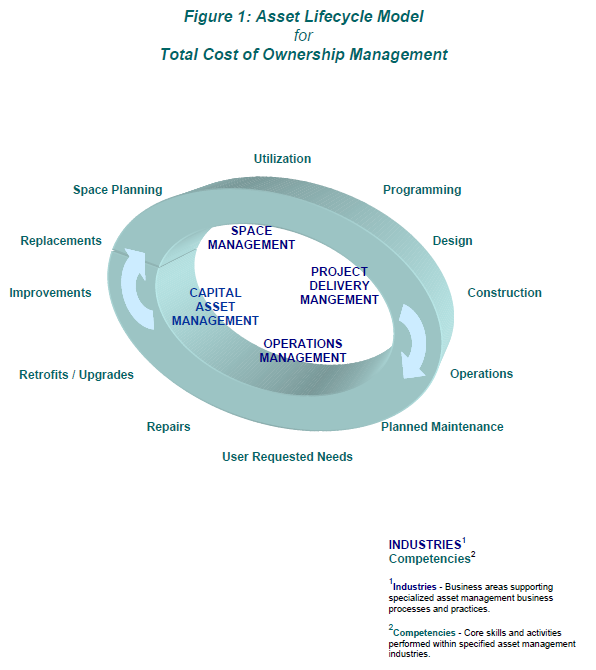
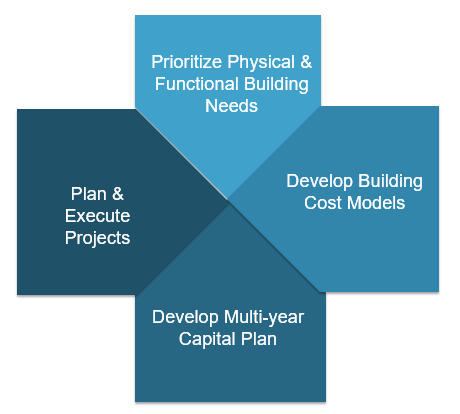
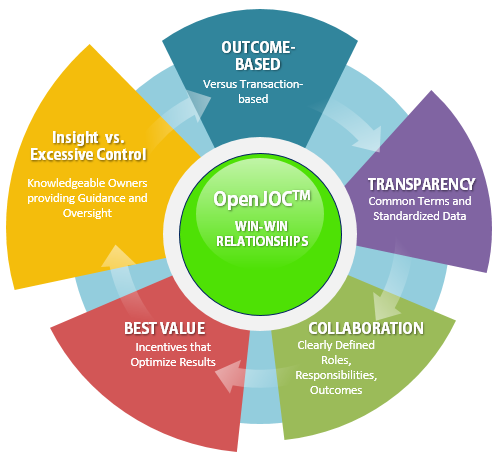


 NBS National BIM Report 2013
NBS National BIM Report 2013 IFC/COBie Report 2012
IFC/COBie Report 2012




